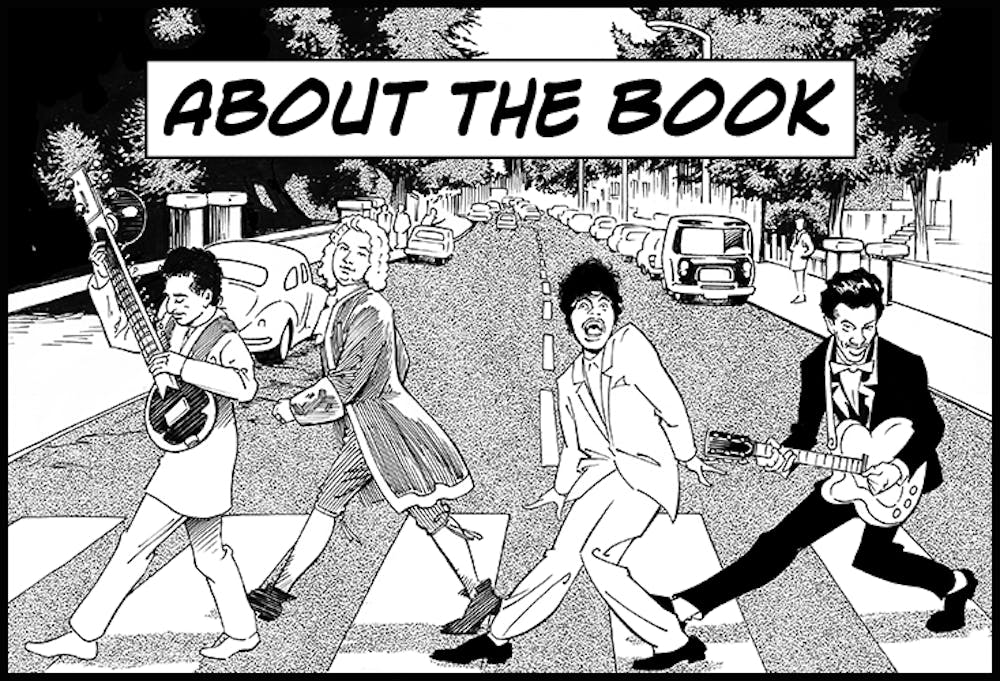“We want to drink your blues,” scream the zombie copyright lawyers on the cover of “Theft: A History of Music.” Musicians, don’t be alarmed! Our heroes are on the way to save the day with…a guide to copyright law. Well, a graphic guide: a comic book.
James Boyle and Jennifer Jenkins, both Duke law professors, tell the story of the thin balance between creativity and control in the music industry. In a world where nothing is new under the sun and musicians stand on the shoulders of their predecessors, how do we make sure that artists get rewarded for their products without hampering future musical developments?
With their eclectic and dynamic drawings, Ian Akin and Brian Garvey accompany Boyle’s and Jenkins’s comic book alter egos—and their handsome musicologist guide—in a three-thousand-year-long journey. The trip takes them from Mesopotamian music inscriptions to Plato’s Greece and its rejection of musical innovation, from the France of the Troubadours and their secular interpretation of religious hymns to the England of the Statute of Anne, all the way to the contemporary U.S. music scene. They highlight the cultural environment that breeds its cross-borrowings, the technological progress that enables them and the copyright regime that allows that development.
Ultimately, they land on the problem: Ray Charles, Beethoven, Robert Johnson and many others great musical innovators created entire new genres and deeply influenced music as we know it. At the same time, though, they heavily borrowed from the longstanding traditions that preceded them. Their innovations that we cherish today would have been thwarted under current copyright law. If music evolves through enriching by copying, what are we losing when we do not allow the “copying” part of the equation?
The second of a two-book series sponsored by the Duke Center for the Study of the Public Domain, “Theft” follows the steps of “Bound by Law,” an outline of intellectual property for documentary films. With over one million downloads, “Bound by Law” showed the interest of a public Boyle and Jenkins wanted to serve.
“They are practical manuals,” Boyle said of the two books, “tools to translate legal notions into an accessible language for the use of the next generation of artists.”
However, the second comic book took over ten years, much longer than expected. The death of Keith Aoki, one of the authors, left the project orphaned and without a hand to draw it. The promise to finish “Theft” and the desire to conform to that vision led the authors to start anew with the help of Akin and Garvey.
These weathered illustrators brought the comic book to a new level. Accustomed to drawing for Marvel and Disney, they infuse their frames with a dynamism and tactile quality typical of the most popular action figures. They are able to create images with constant entropy: dynamic and restless, sometimes messy and maybe confusing. And they perfectly portray Boyle and Jenkins; their sass and humor punctuate the book and create a jazzy atmosphere.
However, it is the blend of different styles and themes that gives “Theft” its unique identity. From the Beatles’ “Abbey Road” cover to an Igor-like narrator, from the beloved DeLorean to the Dr. Who’s Police Box, “Theft: A History of Music” constantly cites and rearranges pieces of pop culture, making it an ode to the public domain.
Get The Chronicle straight to your inbox
Signup for our weekly newsletter. Cancel at any time.

